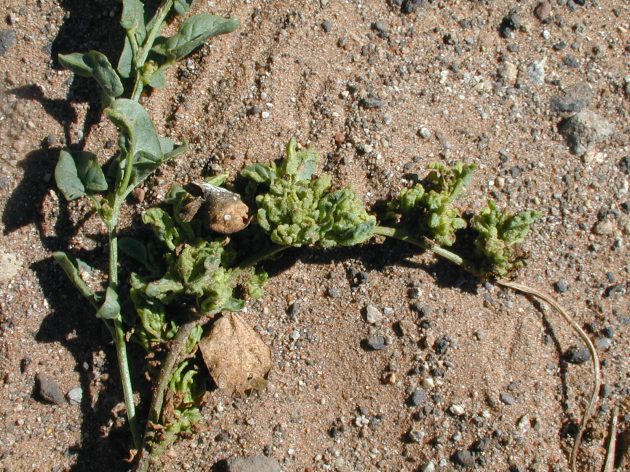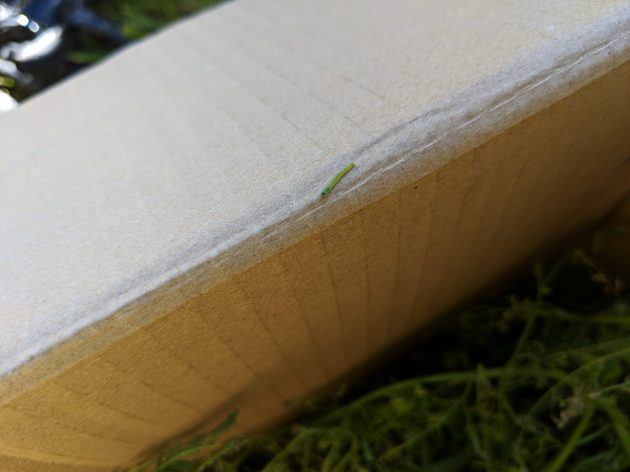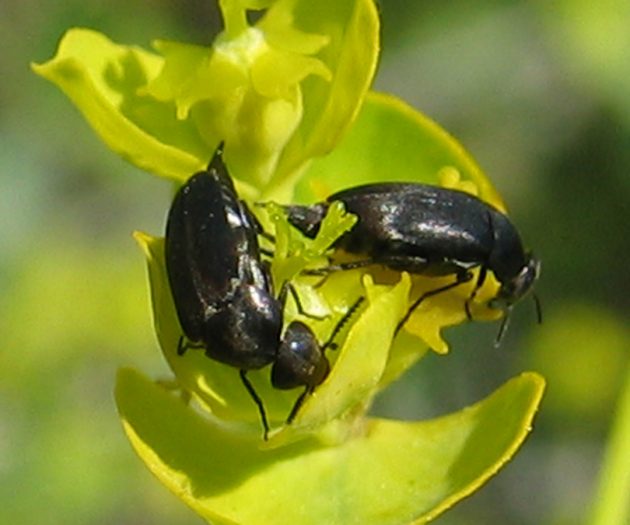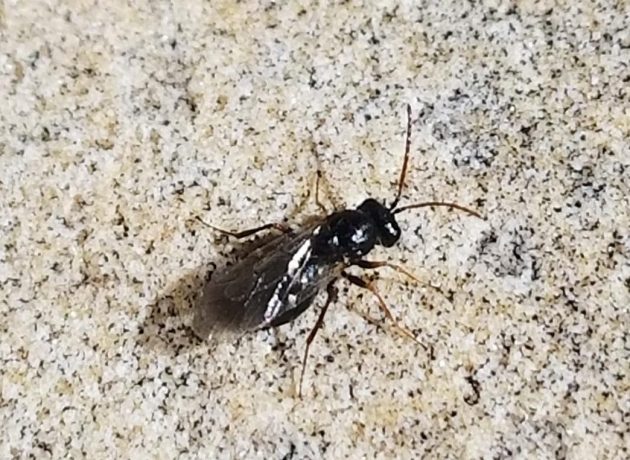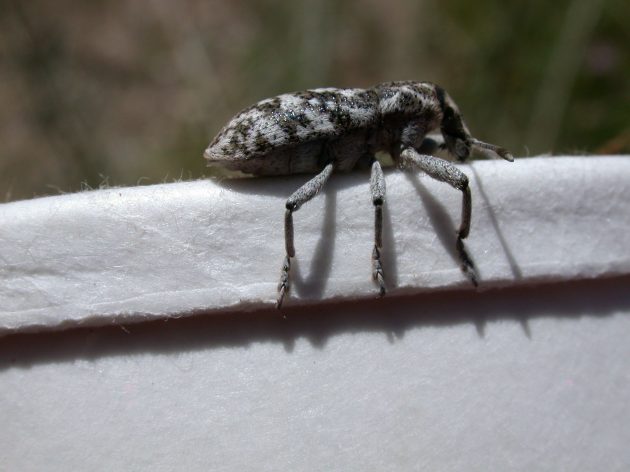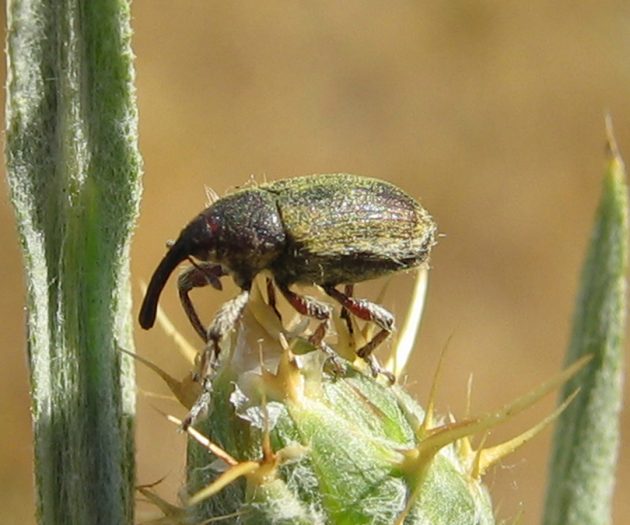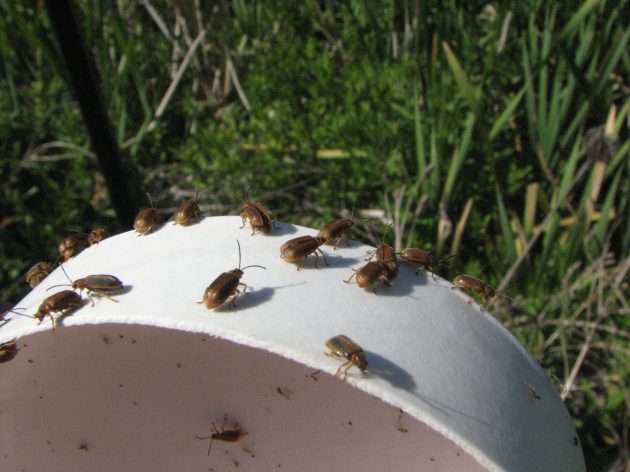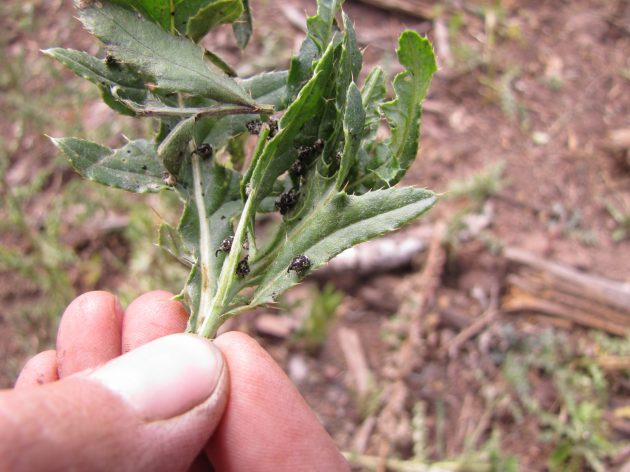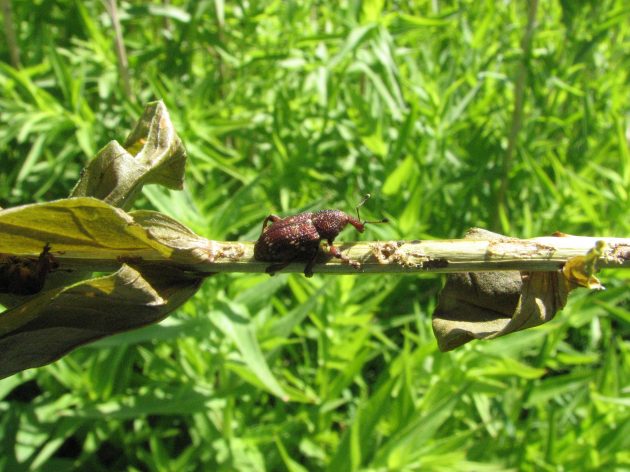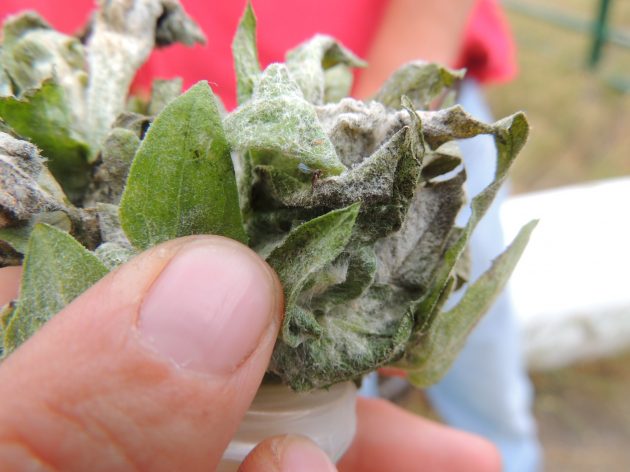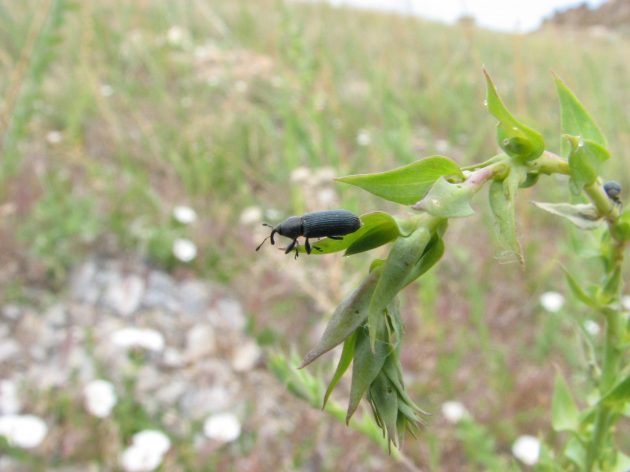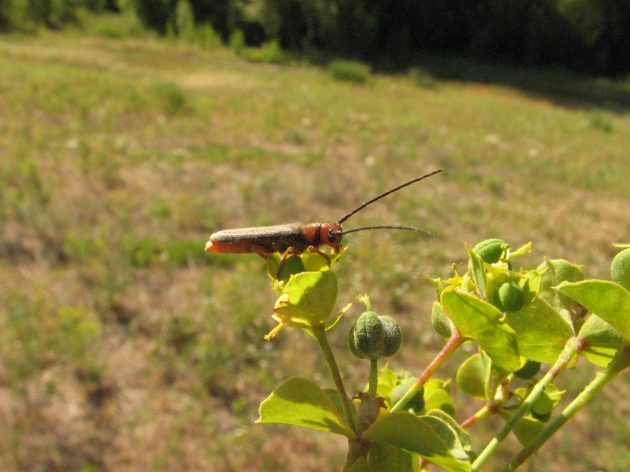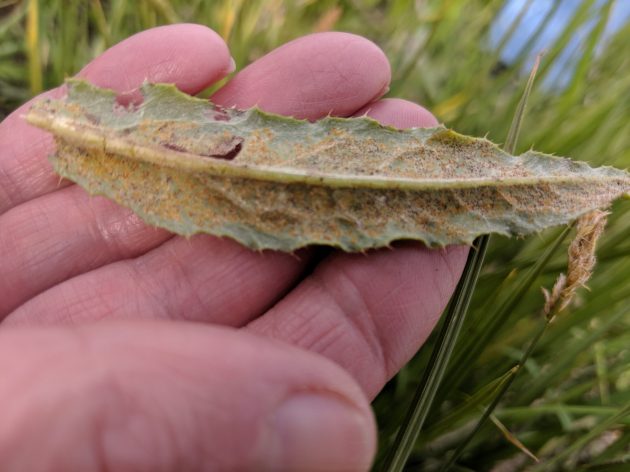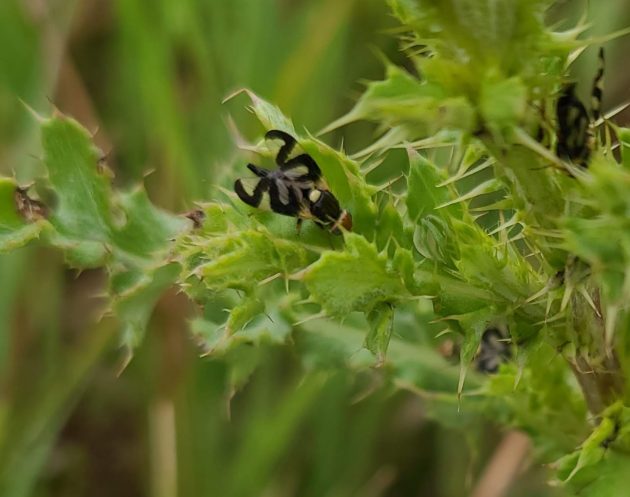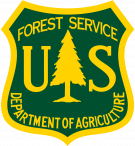Natural enemies being used to
reduce invasive populations, creating diversity.
Directions for releasing biocontrol agents at sites. Go through each step and then document the release in our iBiocontrol app.
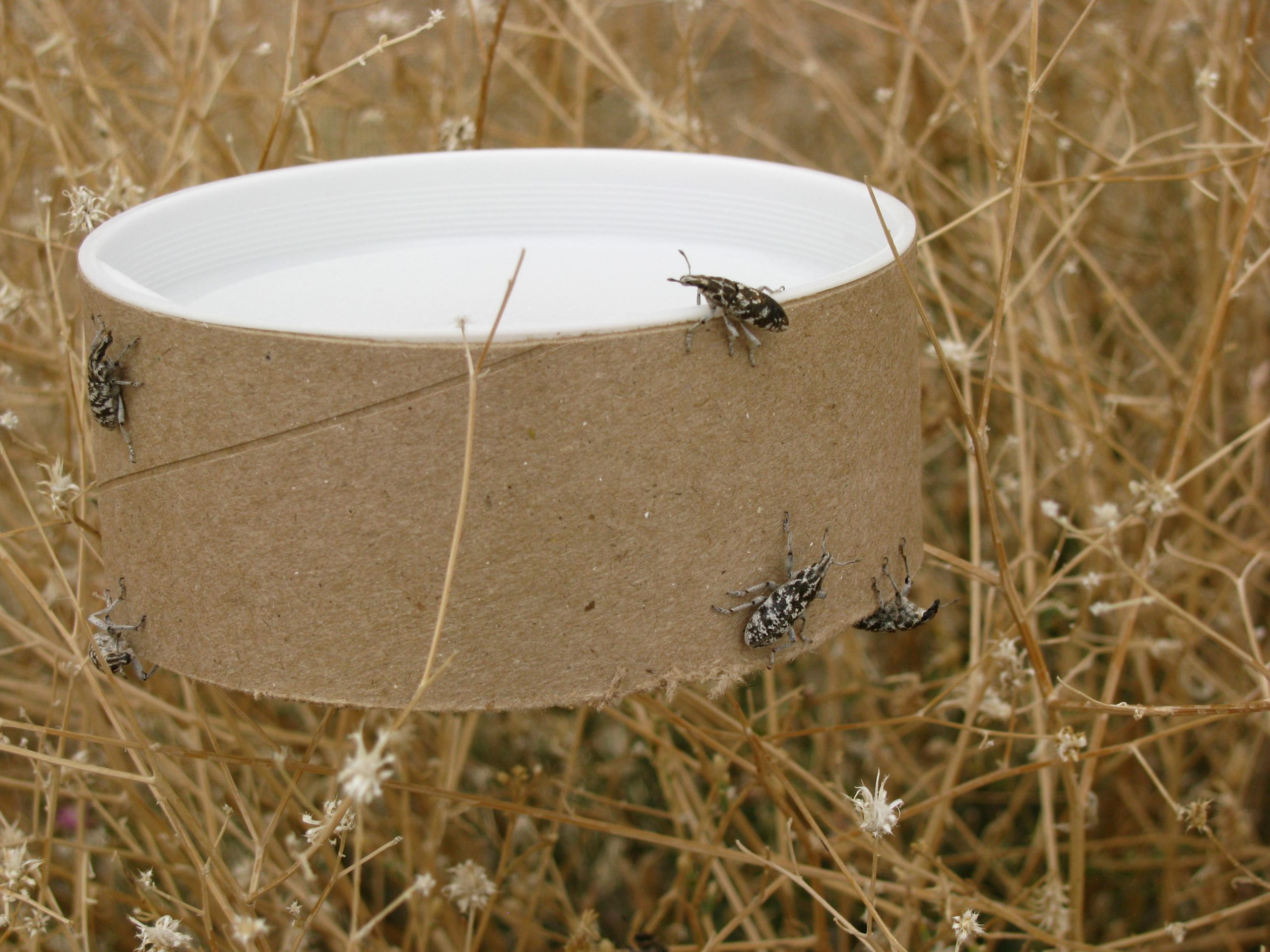
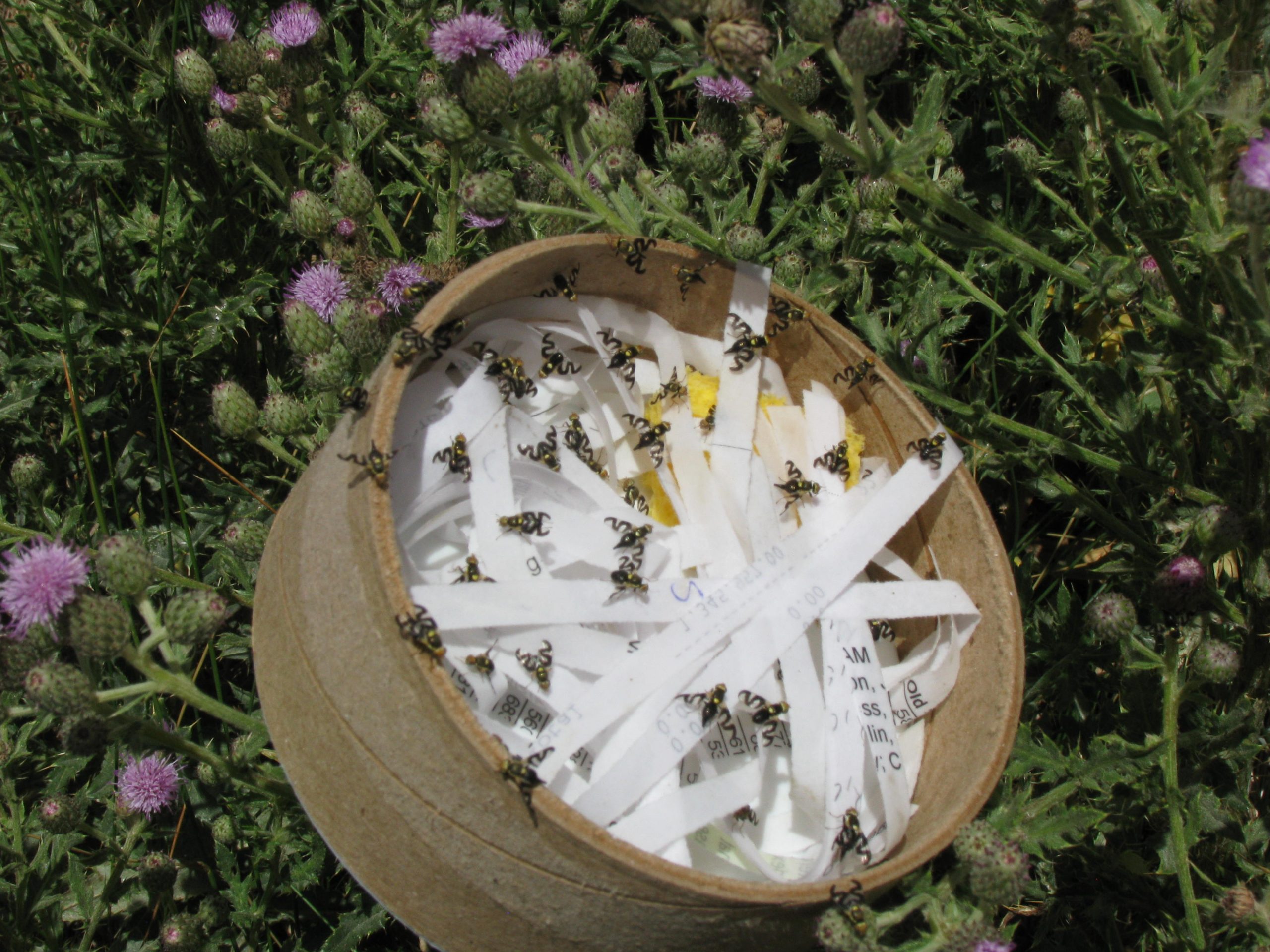
Biocontrol is the introduction of a natural enemy, such as an insect, to control invasive species like noxious weeds. Biocontrol is an important tool in integrated weed management.
Biocontrol is a process that begins with overseas exploration and ends in various methods of agent introduction. Methods to biocontrol are constantly evolving thanks to new research and field data.
The Biocontrol Process
- Overseas exploration begins to discover possible natural enemies to non-native invasive species.
- Host Specificity tests are conducted to ensure that we do not see non-target impact to the surrounding plants and environments. Host specificity testing can take many years.
- Permitting: All biocontrol agents must be submitted for a federal permit to ensure safe and appropriate use before they are allowed to be taken into the field.
- Biocontrol agents are released into field sites. When insects establish, we can use the site as an insectary to collect and redistribute biocontrol agents to new sites.
The goal of biocontrol is not to eradicate noxious weeds. This is a tool that can be used help stop invasives from spreading and reduce noxious weeds to allow for native plants to grow. Typical impact of a biocontrol agent can vary from 30% to 80% reduction of an invasive weed.
The best way to determine if biocontrol is working is to monitor sites using the Standardized Impact Monitoring Protocol (SIMP) provided by the US Forest Service. Sites are monitored to determine efficacy of biocontrol agents in a single location and to determine overall effectiveness of each biocontrol species.
Not all biocontrol agents are created equal. Some biocontrol agents can help meet our management goals in only few years while others may take much longer and are better suited to help stop the spread.
Insects are subject to many nuances in climate within specific sites. Sites should be evaluated and management goals should be considered when deciding what type of integrated weed management strategies to employ.
Your local county weed supervisor can help you determine if biocontrol is right for your landscape. Most biocontrol agents can be obtained through organized collection field days.
Biocontrol agents can also be purchased through approved biocontrol vendors online or in person.
Biocontrol is only one of the many noxious weed management strategies available. Biocontrol should be considered when other management is too expensive or not possible. Biocontrol is a great compliment to an integrated weed control program.
Biocontrol agents usually work best on LARGE, DENSE populations of noxious weeds.
Biocontrol is not possible when other insect management strategies are in use such as the use of insecticide for mosquito abatement or spider control.

